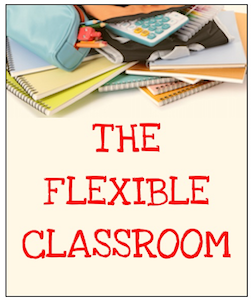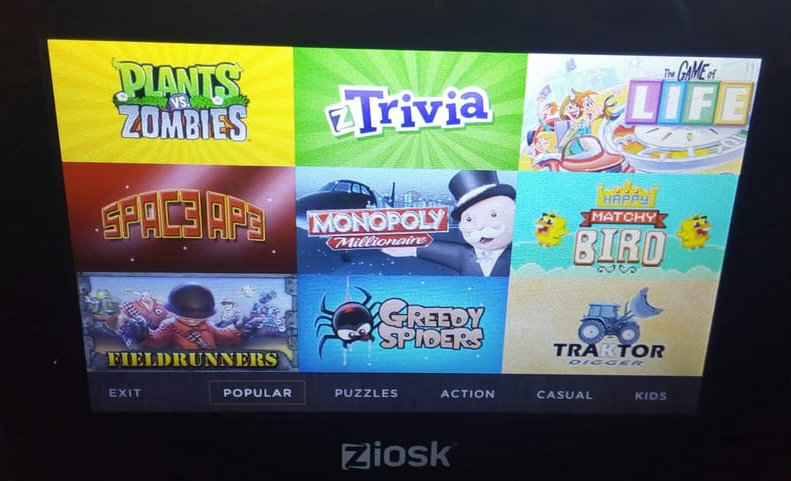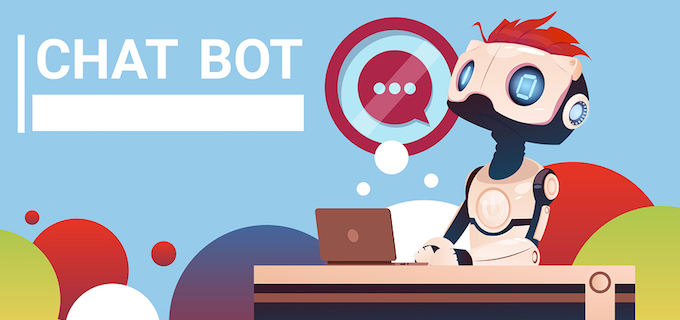The Very Real World of Artificial Intelligence
A MiddleWeb Blog

My son Oliver likes to create outrageous names for our team. #Harambe and #DabAholic are his favorites. One day, when we needed to order, I observed, “You know, all those other players have regular old names like John and Mary and Sue.”
My kids looked at each other, grinned at my ignorance, and conferred to determine who would explain the ways of the Ziosk to me. Having a fairly tech savvy mom, they don’t get to show me up very often.
Zoey then “dropped some knowledge on me” and explained, “You aren’t playing real people. It’s AI. Artificial Intelligence.” Oliver added, “It’s like bots.”
This conversation, like so many I have with my kids and students, helps me to remember that I must rely on them to show me the way forward when it comes to technology integration. They are always going to know more than I do. That’s okay though. I’m comfortable with that.
Why am I okay? I had to teach my mother-in-law how to use an ATM machine, my dad what DVR meant, and some of my colleagues how to use Infinite Campus, my school’s grading and student management system. The commonality? I’m younger than the people I “helped.”
Rethinking technology use in the classroom
Sometimes – many times, I think – there is a distrust of technology that has to be dispelled by someone with a less fixed mindset. Don’t get me wrong, I’m well aware that there are tech gurus who are my elders. But in general, I learn the most from those who are younger.
This fall my new book, The Flexible SEL Classroom: Practical Ways to Build Social Emotional Learning in Grades 4-8, will be coming out. It is a follow up to a new take on differentiation that I introduced in my first book, The Flexible ELA Classroom: Practical Tools for Differentiated Instruction 4-8.
In both books, I suggest that there’s a crucial need for teachers to “up our game” in how we differentiate for students. However, it wasn’t until I was writing the “Self-Management” chapter in the SEL book that I realized the necessity for teachers to rethink how we utilize the technology we are already familiar with and use it in new and innovative ways, as well as allow our students to show us the way. Here’s an excerpt:
Educators at this juncture in time are at a real crossroads, one that I believe can impact student learning exponentially. Technology. Devices. Smart Phones. Tablets. iPads. Beats. Ear buds. Laptops. Whatever the technology is that our students love, we need to embrace it, and to learn from them how it can best serve all of our purposes.
It might be tempting to compare our own experiences (or lack thereof) with technology, but as you recall the adults in your own life, did any of their “back in my day” stories ever do anything other than alienate you from them, as well-meaning as they might be?
Devorah Heitner, author of Screenwise: Helping Kids Thrive (and Survive) in Their Digital World, explains that “In my fieldwork, this overwhelmingly negative feeling that many parents and educators have about kids ‘abusing’ technology comes up over and over again, which is why I think of it as one of the most dangerous barriers to tech-positive parenting.”
She notes, “A child who has used technology to support his goals and knows when to relate face to face and when to find other solutions will be prepared for the challenges of life.” This ability to move through the world, both digital and actual, is at the heart of teaching in a flexible classroom, where the goal is to put the academic, social, and emotional needs of the student first.
The chapter goes on to talk about wearable technology like Apple watches, as well as teaching students to use Google calendars, reminders, etc. What I learned from writing about technology in this way is that the underlying nervousness when unfamiliar technology is introduced may be predictable, but we must resist our fixed mindsets. I’m not the only one who thinks this way.
Students can lead the way
In 2014, Science Daily published research that suggests parents learn technology from their children between 30% and 40% of the time. Way back in 2001, before most of us could have predicted the technology boom in education, Sara Armstrong in Edutopia noted in this piece that it was the students leading the way, teaching the technology to the teachers.
In this recent Getting Smart Q&A about personalized learning, Tom Vander Ark is asked, “Do you see the classroom as a place where students are coming to learn and not be taught?” His answer, found here, is cause for celebration for those of us who differentiate, run PBL classrooms, and love innovations.
The future is here
Not everyone is ready to trust AI, but in order to fully participate in the lives of our students and our own children, we need to “go” where they are – whether that is SnapChat or Lynda. That “place” where they are isn’t necessarily “real” in one sense, but we need to validate that place because not only is it very real to them, it’s where the future awaits.
The future is already here — it’s just not very evenly distributed.” ~ Science fiction writer William Gibson.




































